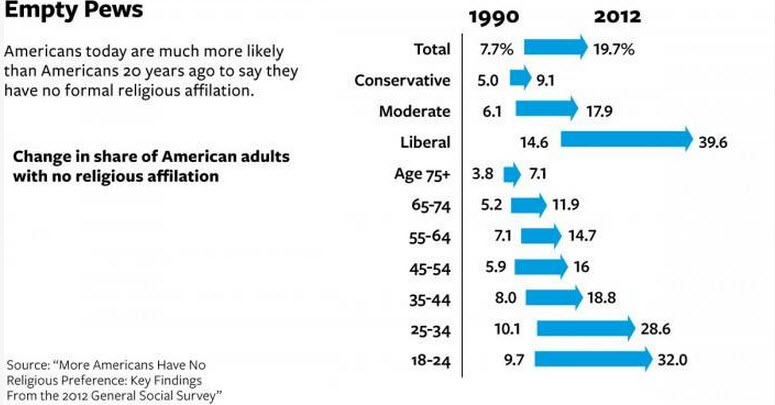In recent months I have had more conversations than ever before about the continued rise of the nones (the increase in the percentage of American adults without formal religious affiliation). While there is plenty of data out there showing that the percentage of nones is increasing (for example:”America the Religiously Diverse” and “Rise of the Nones“) it doesn’t answer the number one assumption I hear: as people age they become more religious. This assumption sounds logical and contains and element of truth. It does not, however, explain away the rapid rise in the percentage of the nones. The chart below offers a helpful comparative analysis comparing the percentages of people in varying categories in 1990 to those in the same categories in 2012.
So What?
The data is clear, the growth in nones is real. While non-affiliation does decline as age increases, over time each age cohort experienced a significant increase in the percentage of people who were not formally affiliated with a religion. For example, in my current age group, the nones have grown from 8% in 1990 to 18.8% in 2012.
Reality check: every age group except the 75+ group experienced at least a 100% increase in the percentage of those who were not affiliated from 1990 to 2012. If such increases persist, by 2034 we will see 64% of 18-24 year olds with no religious affiliation.
- Do you think the rate of increase as a percentage of the American population who lacks formal religious affiliation will grow about the same in the next 22 years as it did the last 22 years or do you expect the pace will accelerate or decelerate? Explain the rationale for your answer.
- What do you believe to be some of the key contributors to the decades long rise in non-affiliation?
- How has this trend impacted the way your local congregation plans its ministry and mission?
Note: The Empty Pews chart is from Peter Beinart’s “The End of American Exceptionalism“
